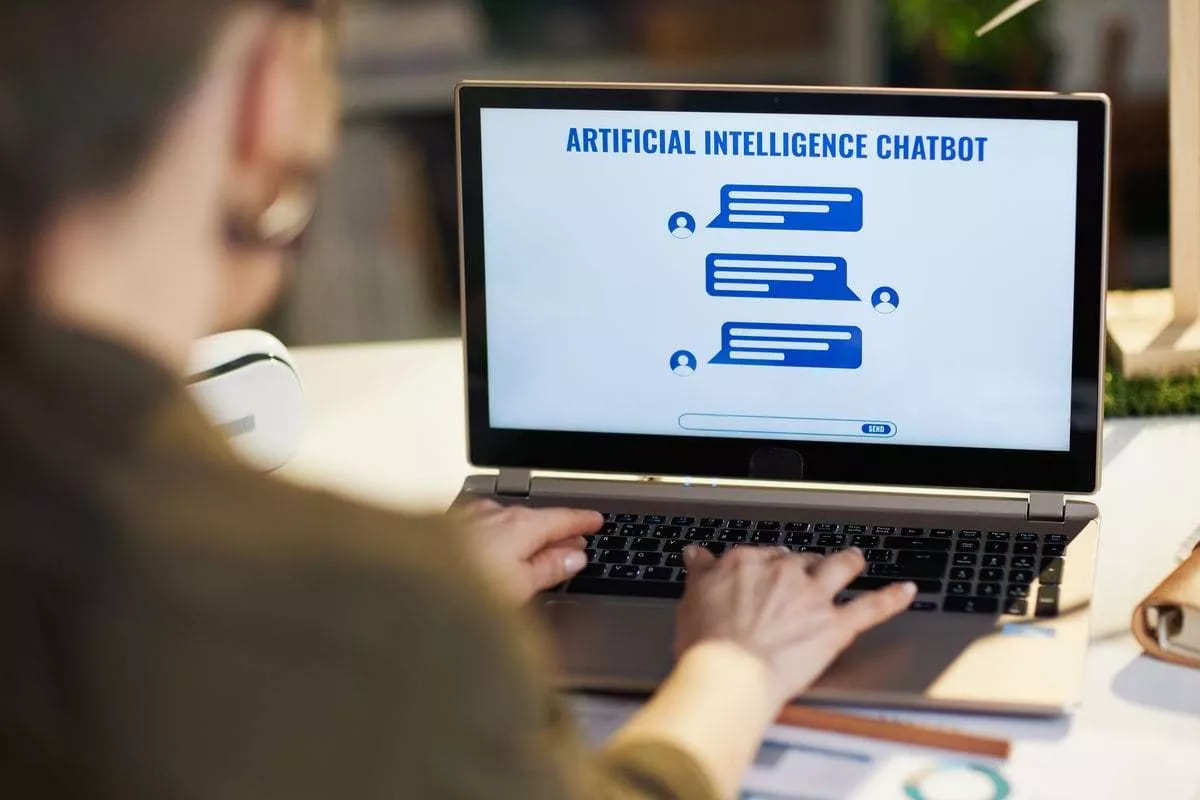Real-world interactions, just like these in human experiences, are probably essential for complete sensory perception, physical motion and perceptual illustration of concepts54. For the RSA evaluation (‘RSA’ section in Results), after obtaining distributions of similarities between all human topics and every mannequin separately for each area, we carried out a three × 2 (domain levels by fashions, respectively) two-way ANOVA for each set of models—ChatGPTs and Google LLMs—separately. This separation was to assess the consistency of major results of domain across the two LLM households. Owing to violations of the equal variances assumption, we used the Satterthwaite’s technique for the ANOVA tests and applied Welch’s corrections for post hoc pairwise comparisons. In the linear regression analyses (‘Linking further visible coaching to model–human alignment’ section and ‘Validation of results’ part in Results), we conducted analyses after checking the assumptions of linearity, independence of residuals and normality. While the regression models in the ‘Linking further visible coaching to model–human alignment’ part in Outcomes meet all assumptions, the mannequin within the ‘Validation of results’ part in Results reveals a slight violation of the normality of residuals assumption, as indicated by the Normal Q–Q plot.
2 Spine Network: Multi-layer Transformer
Latest state-of-the-art NLP pre-trained models additionally use a language mannequin to learn contextualized text representation. From ELMo (Peter et al., 2018), GPT (Radford et al., 2018) to BERT (Devlin et al., 2018), all of them use language mannequin (LM) to attain a greater outcome. Entropy, on this context, is commonly quantified in phrases of bits per word (BPW) or bits per character (BPC), which hinges on whether or not the language mannequin makes use of word-based or character-based tokenization. The canonical measure of the efficiency of an LLM is its perplexity on a given textual content corpus. Perplexity measures how well a mannequin predicts the contents of a dataset; the higher the chance the mannequin assigns to the dataset, the decrease the perplexity. In mathematical terms, perplexity is the exponential of the typical unfavorable log chance per token.
Real-world NLU applications corresponding to chatbots, customer support automation, sentiment evaluation, and social media monitoring had been also explored. A well-liked open-source natural language processing bundle, spaCy has stable entity recognition, tokenization, and part-of-speech tagging capabilities. Pre-trained NLU fashions are models already skilled on vast quantities of data nlu training and able to general language understanding. Comply With this information to achieve practical insights into pure language understanding and the means it transforms interactions between humans and machines.
Ambiguity arises when a single sentence can have a number of interpretations, leading to potential misunderstandings for NLU fashions. Language is inherently ambiguous and context-sensitive, posing challenges to NLU models. Understanding the which means of a sentence often requires contemplating the surrounding context and decoding refined cues.
- For instance, people can purchase object-shape knowledge by way of both visible and tactile experiences57, and mind activation within the lateral occipital complicated was observed during each seeing and touching objects59.
- For the dimension-wise correlation analyses within the individual-level evaluation, we utilized independent-sample t-tests to determine whether the distributions of model–human similarities differed significantly from human–human similarities.
- Despite these limited input modalities, these models exhibit remarkably human-like efficiency in numerous cognitive tasks6,21,22,23.
- To address this problem, we adopt the RSA44 to fully seize the complexities of word representations, the place dimensions similar to smell and visual look are considered collectively as a part of a high-dimensional illustration for every word.
- Notice that the training information doesn’t explicitly link the question-answer pairs to related paperwork.
- For instance, some have argued that language itself can act as a surrogate ‘body’ for these models, harking again to the largely conceptualized and ungrounded colour knowledge in blind and partially sighted individuals4,6.
A χ2 take a look at of independence was then performed to assess whether or not the counts various significantly across the domains (non-sensorimotor, sensory or motor). This examine goals to research the extent to which human conceptual representation requires grounding. The mannequin prompt and design have been aligned with the directions for human individuals, which began with explaining the dimension and itemizing the words to be rated. C, The key domains studied span non-sensorimotor, sensory and motor domains, with particular example questions offered for every respective area.

The shortcomings of making a context window bigger embrace larger computational price and presumably diluting the focus on local context, whereas making it smaller can cause a mannequin to overlook an essential long-range dependency. Size of a dialog that the mannequin can take into account when producing its subsequent reply is limited by the dimensions of a context window, as well. If the length of a dialog, for example with ChatGPT, is longer than its context window, only the elements inside the context window are taken into consideration when generating the subsequent reply, or the mannequin wants to apply some algorithm to summarize the too distant elements of conversation.
In this study, we used LLMs to check the bounds of conceptual information acquisition by quantifying what features of human conceptual data can or cannot be recovered solely from the language domain of studying or from a combination of language and visible domains. We discovered that studying constrained to the language domain captures human-level conceptual representation in non-sensorimotor dimensions corresponding to valence and emotional arousal however yields impoverished illustration of sensorimotor knowledge. Our findings prolong previous research on ungrounded artificial neural models4,5,6 and congenitally blind and partially sighted people7,8,9,10, which confirmed alignment with the conceptual representations of sighted human members. By systematically examining conceptual representations across a spectrum from non-sensorimotor to sensorimotor domains and a variety of concepts, we found a gradual decrease in similarity between LLM-derived and human-derived representations, with stronger disparity in sensorimotor domains. These results offer insights into the extent to which language can form advanced concepts and underscore the importance of multimodal inputs for LLMs emulating human-level conceptual data. The current research exemplifies the potential advantages of multimodal studying the place ‘the whole is greater than the sum of its parts’, displaying how the integration of multimodal inputs can probably result in a more AI Agents human-like representation than what each modality may provide independently.
Dialog Supervisor Visualized

The temperature parameter was set to zero, following suggestions described previously21,22) to ensure deterministic, constant responses without random variations. The most token size was set to the higher limits permitted—2,048 tokens for GPT-3.5, GPT-4 and Gemini and 1,024 tokens for PaLM—to keep away from truncating responses. To improve the reliability of our results, we implemented 4 rounds of testing for every mannequin. This method allowed us to cross-verify the consistency of the outputs across multiple iterations (see Supplementary Info, part 1, for the settlement between these rounds). As detailed in Table 2, we first evaluated models’ responses on the validation norms, then computed Spearman correlations between people and fashions for these norms.
This may be helpful in categorizing and organizing knowledge, in addition to understanding the context of a sentence. At Present, the leading paradigm for constructing NLUs is to construction your information as intents, utterances and entities. Intents are basic tasks that you actually want your conversational assistant to recognize, such as ordering groceries or requesting a refund. You then provide phrases or utterances, that are grouped into these intents as examples of what a person would possibly say to request this task. This project is licensed underneath the license found in the LICENSE file in the root listing of this supply tree.Parts of the supply code are primarily based on the transformers project.

Llms Won’t Replace Nlus Here’s Why
NLU models are evaluated using metrics corresponding to intent classification accuracy, precision, recall, and the F1 score. These metrics provide insights into the mannequin’s accuracy, completeness, and total performance. NLU models excel in sentiment analysis, enabling companies to gauge buyer opinions, monitor social media discussions, and extract valuable insights.
We then constructed representational dissimilarity matrices (RDMs) by calculating the Euclidean distance between word vectors for each mannequin and individual human, capturing word similarity relationships (for example, ‘pasta’ and ‘noodles’ are more similar than ‘pasta’ and ‘roses’). The similarity between RDMs of each mannequin and every individual human was calculated through the Spearman rank correlation. We thus obtained a distribution of similarities between all human participants and each mannequin separately on each domain. We performed two mixed-effects analyses of variance (ANOVAs) to statistically consider the model–human similarities across three domains, specifically to determine https://www.globalcloudteam.com/ whether or not these similarities have been lower within the sensory/motor domains in contrast with the non-sensorimotor domain.
We envision a future the place LLMs are augmented with sensor knowledge and robotics to actively make inferences about and act upon the physical world16,17. These advances might catalyse LLMs to truly embrace embodied synthetic illustration that mirrors the complexity and richness of human cognition17,29. Within this perspective, our findings could contribute to the trajectory of coaching data improvement and multimodal integration. Latest advances in large language models (LLMs) provide a novel avenue to test the extent to which language alone can give rise to complicated concepts15,16,17. LLMs have enabled us to (1) estimate what sorts of structure (and how much) can in the end be extracted from giant volumes of language alone18,19,20 and (2) study how totally different input modalities (for instance, textual content versus images) affect studying processes15,sixteen. Current LLMs have been skilled on massive amounts of data, both constrained to the language area (that is, large-scale text knowledge as in GPT-3.5 and PaLM) or incorporating language and visual enter (for example, GPT-4 and Gemini).
For more uniform comparisons throughout numerous dimensions, we restricted our analysis of sensory and motor domains to words common to both the Glasgow and Lancaster Norms (4,442 words). Still, we retained the complete Glasgow Norms (5,553 words) for the non-sensorimotor area. Each of the overlapped 4,442 words has corresponding ratings across all evaluated dimensions. In occasional cases, models categorized sure words as ‘unknown’ or unable to gauge (PaLM failed at producing all 4,442 words as detailed above).
These analyses had been carried out individually for the ChatGPTs and Google LLMs, considering ‘domain’ and ‘model’ as two distinct components. For the RSA analysis, we first iterated through human ranking information from the Glasgow and Lancaster Norms, extracting scores across the non-sensorimotor, sensory and motor domains for lists of words rated by individual human members. Each word was represented by a vector containing human scores for each domain (for example, a vector for the sensory area included scores from six typical senses). Subsequent, with these vectors, we constructed RDMs by calculating pairwise Euclidean distances between words for every list rated by individual human individuals. The mannequin RDMs had been constructed utilizing averaged scores across four runs generated by the GPT fashions and Google models for a similar words in every human word list. For the dimension-wise correlation analyses in the Outcomes section on aggregated mannequin and human rankings, we utilized the Mann–Whitney U check for independent-sample non-parametric comparisons of model–human similarities between sensorimotor and non-sensorimotor domains.
The pairwise correlations had been calculated within every record, and these have been aggregated, leading to a total of 22,730 pairs for developing the overall distribution for each dimension within the Glasgow Norms. This means that, while in the limit multimodal data could be synthesized from language alone, this kind of learning is inefficient. By contrast, human learning and knowledge illustration are each inherently multimodal and embodied, and interactive from the outset15. After all, when thinking of flowers, what comes to your mind just isn’t merely their names but the vivid symphony in which sight, contact, scent and all of your previous sensorimotor experiences intertwine with profound feelings evoked—an experience far richer than words alone can maintain.
